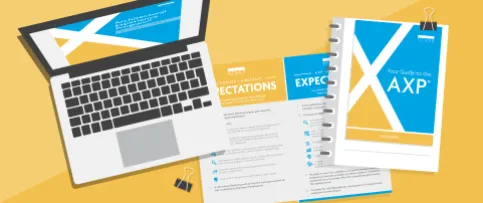Senior Architect Tina Stanislaski AIA, LEED AP, NCARB, has been an IDP supervisor at HMFH Architects, Inc. for two years. We asked the Massachusetts architect to share how she supports emerging professionals, stays up-to-date on the latest program changes, and what she’s learned from being a supervisor.
How long have you been practicing?
I’ve been practicing for over 20 years. I graduated with my B.Arch in 1994 from Syracuse University.
Why was it important to you to become a supervisor and mentor?
I remember the Intern Development Program (IDP) and registration process being daunting, and I would have found it helpful if a project manager had given me encouragement or guidance. I hope to do that for those I’m mentoring.
How many aspiring architects do you supervise each year?
That depends on how many aspiring architects are on my current project team at any given time. I like to mentor folks who’s work I directly oversee. Currently, I am supervising three aspiring architects. One has already completed the IDP and is taking exams, one hasn’t yet started their IDP, and one is currently working on their IDP.
How do you help your aspiring architects gain the experience needed for IDP?
I review each individual’s IDP progress to understand where they may be deficient, and then I structure their schedules and tasks to fulfill those experience areas. As a project manager, I have the ability to move staff around as I see fit. And I think well-rounded aspiring architects turn into great project architects in the future.
Does your firm support aspiring architects with the ARE?
HMFH is very supportive of our aspiring architects. We encourage study groups during lunch hours, and before and after work. We purchase study materials for them including the Ballast and Kaplan study guides, flash cards, and even reimburse them for the cost of the exam when they pass.
What advice do you give to aspiring architects?
Stay the course! The ARE process is a long and winding road, and it can be difficult to manage both work and study time. I encourage them to schedule their exams four to six weeks apart. Once the appointment for the exam is scheduled, it gives them motivation to keep studying to meet their goals.
How do you stay up-to-date on the latest program changes?
I feel like being a supervisor keeps me in touch with any changes because my aspiring architects tell me about the latest and greatest news regarding the exam and IDP. We encourage our younger staff to take part in professional committees such as the Internship Advisory Committee. Participants then report back on updates, changes, and other matters of interest to their supervisors and the office as a whole. That way, the entire staff can stay abreast of program updates.
How has being NCARB certified helped your career?
As a project manager I oversee a team of professionals and stamp drawings on projects. Being certified has been a big help in obtaining work in other states that I would have missed out on. My current project is in Dover, NH, building a 310,000 square feet high school and technical career center. To become eligible to start this project, all I had to do to gain reciprocity was have NCARB send my record to New Hampshire. I was registered that same afternoon!
What has being a supervisor taught you?
It has taught me that there is no one-size-fits-all model to being a good supervisor. I strive to foster good communication between team members; understand how to build on complementary strengths and weaknesses within a team; be appreciative of team members and their work; model good work habits (such as work-life balance); and always ask team members, especially aspiring architects, what their next step is in building their professional knowledge and careers.
Have a recommendation for our Supervisor Spotlight series? Email us at blog@ncarb.org.



